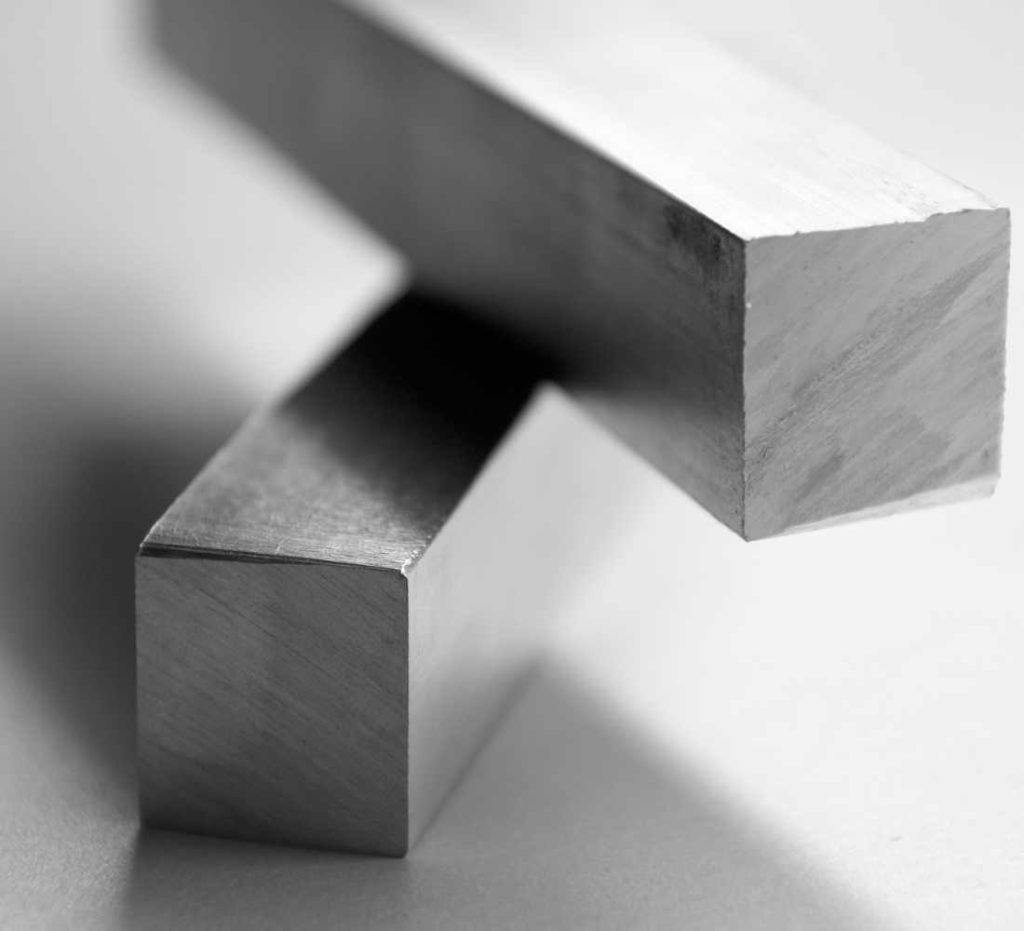
What is Aluminium?
Aluminium is the most abundant metal and the third most abundant element after oxygen and silicon in the earth’s crust. It is a light silver-white metal, found abundantly as trioxosilicates(IV) in rocks and clays. It is a very good conductor of heat and electricity. It is malleable and ductile. It is very useful in making alloys.
Extraction of Aluminium:
The most important ore of aluminium is bauxite, (Al2O3.2H2O). Aluminium is extracted from bauxite by electrolysis in the following steps.
1. Purification and concentration of the ore: Bauxite is heated with NaOH solution to form sodium aluminate (III), NaAl(OH)4. Sodium aluminate (III) is soluble in the solution. Impurities such as the oxides of Iron and Silicon which are present in the ore do not react with NaOH solution and so they are removed by filtration.
Al2O3(s) + 2NaOH(aq) + 3H2O(l) → 2Na[Al(OH)4(aq)]
The formation of the precipitate aluminium hydroxide is initiated by adding aluminium hydroxide crystal to the aluminate (III) filtrate.
2NaAl[(OH)4(aq)] → Al(OH)3(s) + NaOH(aq)
The aluminium hydroxide precipitate is washed, dried and heated strongly to obtain alumina i.e. aluminium oxide, Al2O3.
2Al(OH)3(s) → Al2O3(s) + 3H2O(l)
2. Electrolytic Reduction of Alumina (Al2O3)
The electrolysis of the pure alumina takes place in an iron container lined with graphite. This container serves as the cathodeA cathode is the electrode from which a conventional current leaves the electrolyte. It is the negative part of the cell where reduction takes place. More. The anodeAn anode is an electrode of a polarized electrical device through which conventional current enters the device. It is the positive part of electrolytes where oxidation takes place. More is graphite rode. The graphite rod is dipped into the solution of alumina molten cryolite (Na3AlF6) and fluorspar (CaF2) also called fluorite, common halide mineral, calcium fluoride.
The cryolite and fluorspar lower the melting pointThe temperature at which a solid changes its state to liquid at atmospheric pressure is called the melting point of that liquid. The melting point is usually defined as the point... More and increase the conductivity of alumina.
At the cathode: Aluminium ions are reduced to aluminium metal.
Al3+ + 3e− → Al(s)
At the anode: The oxygen ions are oxidized to oxygen gas.
O2− → O + 2e−
O + O → O2(g)
The overall reaction: 4Al3+(l) + 6O2-(l) → 4Al(s) + 3O2(g)
This electrolytic process yield 98.8% pure aluminium metal.
Aluminium Uses:
- Aluminium foils are used at homes and in the food industries for packaging of food.
- Aluminium is used in paints.
- It is used in the extraction of manganese and chromium from its oxides.
- It is used in the manufacturing of storage cans.
- Aluminium after iron is the most commonly used metal.
- It is mostly used with other metals in an alloy which is used for various processes such as in transportation, constructions, etc.
- It is used in making cooking utensils.



Responses